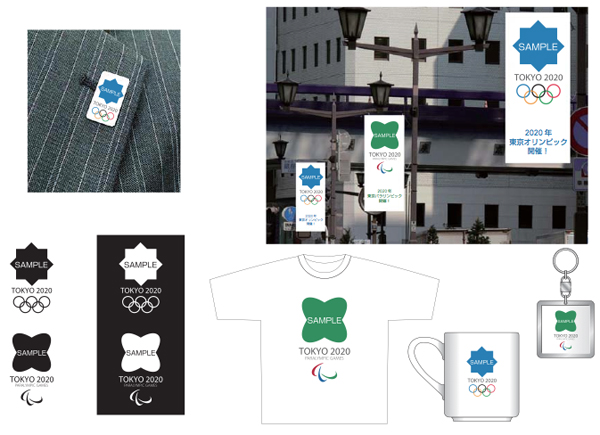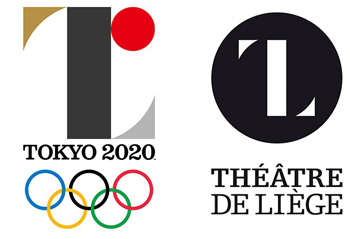
22 Jan Design Community Dismayed by Decision to Crowdsource Tokyo Olympics Logo
At first it seemed that the Tokyo Olympics were on track for building a strong identity for the 2020 games. In July 2015, the Tokyo 2020 Organizing Committee unveiled a logo designed by Kenjiro Sano, a compilation of flat shapes that created a stylized Didone T, combined with a red sun identifier for Japan. The logo was an homage to the simple graphics created for the 1964 Tokyo Summer and 1971 Sapporo Winter Olympics, and was a refreshing contrast to the energetic, hand-script driven identities created for the Beijing, London, and Rio Games. However, the development of the Tokyo Olympics identity went into a tailspin when Belgian designer Olivier Debie accused Sano of plagiarizing Debie’s logo for the Théâtre de Liege.

When Debie and the Theatre filed a joint plagiarism lawsuit against the International Olympic Committee (IOC), the Tokyo Olympic Committee scrapped Sano’s logo. However, the committee’s solution to finding a logo was equally controversial. In mid-October, the committee announced it was crowdsourcing the logo design via a contest, essentially resorting to spec work. The winning logo designer would be awarded 1,000,000 Japan yen ($8,250) and two tickets to the opening ceremony, but would relinquish all rights to the logo in perpetuity. Numerous designers and arts organizations reacted with dismay, and the AIGA issued an open letter asking the committee to reconsider its decision.
AIGA’s letter to the Tokyo Olympic Committee, written by former executive director Ric Grefé, referenced AIGA’s opposition to spec work. First, the letter pointed out that the contest asked designers to contribute hours of unpaid work in the hope of being compensated. Secondly, by opening the contest to the general public rather than limiting it to trained designers, the Committee was disrespecting the design profession and devaluing the work of designers. Third, the reward offered for the winning logo is far below a fair fee for a mark that will generate vast licensing income. Grefé concluded by pointing out that the copyrights for the logo should properly reside with the designer, and not with the committee “in perpetuity.”
Grefé’s eloquent letter pointed out that the logo contest belies Japan’s strong design history: “Japan has a universally admired graphic design profession and legacy, imbued with stunning visual imagery, strong typography, yet simplicity, directness, and elegance in its highest and best form… we believe that you are compromising one of the powerful messages others in the world perceive as emerging from Japan: a strong graphic and visual design tradition, innovative visual explorations, and respect for every profession.”
Despite the controversy, the Tokyo Olympic Committee proceeded apace with the logo contest, garnering 14,599 submissions. (That resolve was not a huge surprise. The logo for the Tokyo Olympic candidate city bid had been crowdsourced similarly.) In early January, the committee announced that they had narrowed the selection to four submissions, which are undergoing an intensive review to ensure that the designs do not infringe on copyrights or trademarks.
The committee also responded to AIGA’s letter, stating that they felt the contest process was “a good opportunity” to engage the Japanese people. By engaging the President of the Tokyo University of the Arts to chair the selection committee, and involving 20 designers who are members of the Japan Graphic Designers Association (their equivalent of AIGA), they felt they were providing enough oversight to ensure the selection of a high quality design. Lastly, the Committee pointed out that the transfer of intellectual property rights complied with the Olympic Charter issued by the IOC, and has been standard practice for Olympic Committees.
In their follow-up on Eye on Design on January 17, AIGA opined that the Tokyo Olympic Committee simply didn’t understand the issue with work on spec. AIGA concluded that while they hadn’t expected the Committee to end the contest, they hoped that other organizations would “use their power and influence to create change for the greater good in the future, and not just make the decision that benefits them at a particular moment, regardless of the wider, global implications.”
In the meantime, the Tokyo Olympic Committee plans to unveil their final selection in March. Sano, the designer of the original Tokyo logo, continues to insist that he did not plagiarize Debie’s logo. Debie, however, has withdrawn his lawsuit, citing prohibitive legal costs. Debie’s potential to recoup his costs may have been hampered by his failure to register the Theatre’s logo design as a trademark.
At top of page: The logo design contest requires applicants to show their submissions in a variety of formats.
